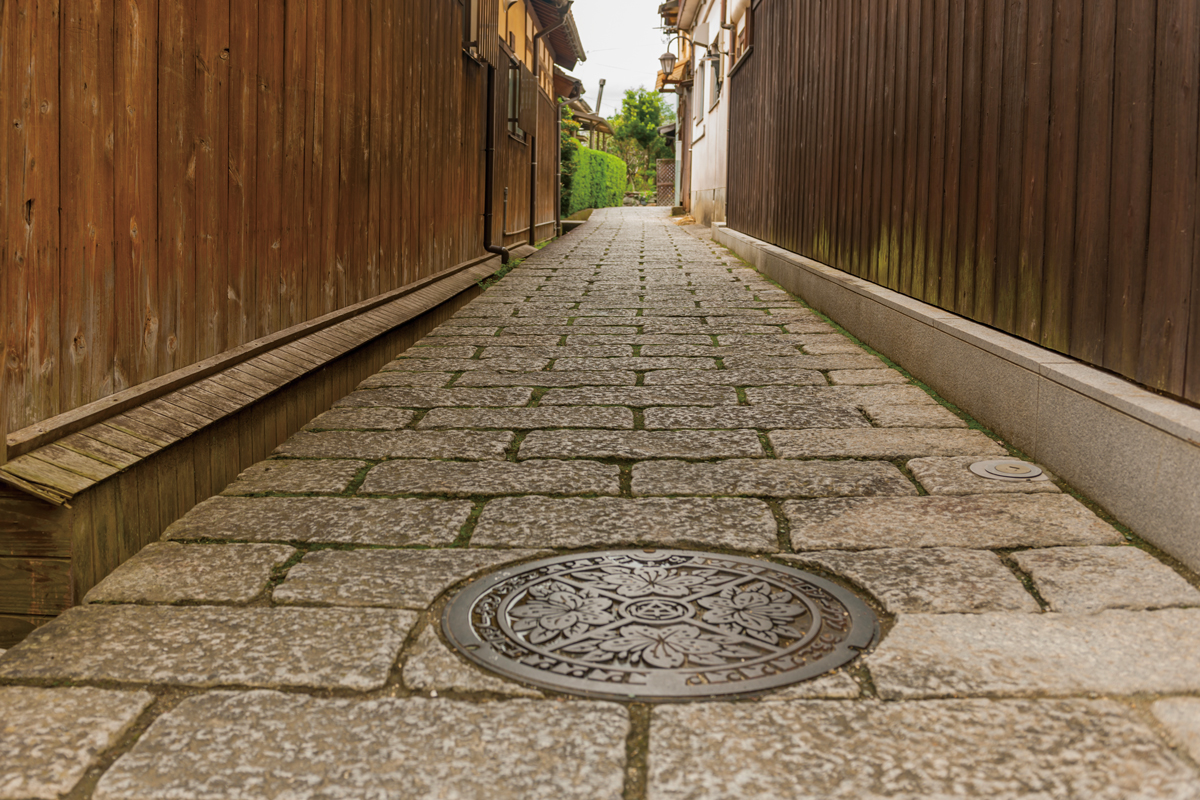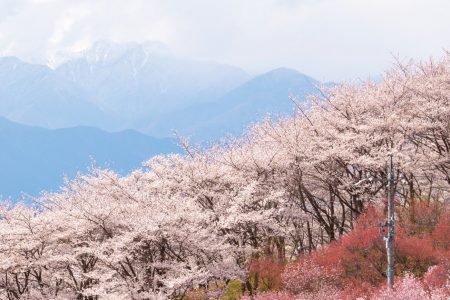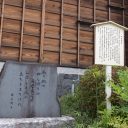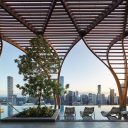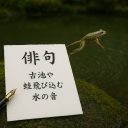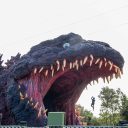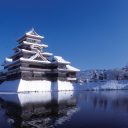Magnificent manhole covers for the ages

A variety of beautifully designed manhole covers can be found all across Japan. Each of them tells stories about the local area they feature in their own unique way. We have carefully selected 27 manhole covers from Hokkaido all the way down to Okinawa to present to you.

Imagery of salmon returning to a clean Toyohira River following work on the sewerage system draws focus to the symbol of Sapporo—the Clock Tower, and the city tree—the lilac.

Japan’s leading fire festival, the Aomori Nebuta festival, is an important cultural asset to the country and is held every year from August 2nd to 7th. The manholes here capture the power and vitality of it.

The embassy of the Netherlands and copyright management company Dick Bruna Japan collaborated to open Miffy Café Kamaishi in 2015 to assist with the rebuilding after the Great East Japan earthquake. This café is the main feature on these covers.

The Akita Kanto festival, the leading festival of Akita City and one of the three main festivals of the Tohoku region is featured on this manhole. People use their skills in this festival and compete by trying to balance rice lanterns on their hips and shoulders, and pray to Inaho, the god of rice, for a good harvest.

The city’s characters “Ito-kun” and “Iinachan” surrounded by cherry-blossom petals make up this manhole’s design. The heartshaped characters’ ears are representative of “a city where hearts meet” and the city’s desire for a naturerich future.

A large expanse of water and ripples surrounds the Chiba City logo along with the city tree, a Zelkova, and the city bird, a little tern. Within the border is an arrangement of the city flower, the Ogahasu or large chestnut lotus, which is also a designated national treasure of Chiba Prefecture.

The 50-year commemoration since the start of the city’s treated water system
features here. The mascot character of the Utsunomiya City Water Department, “Waterworks”, is the central focus, and the background is decorated with the city’s Icho tree (ginkgo biloba). Depictions of other famous Utsunomiya items such as gyoza, cocktails, jazz, and bikes can also be found.

The 40th anniversary of the city’s treated waterworks is commemorated on this cover. Niigata City’s symbol, the Bandai Bridge, is the main motif. The initial ‘N’ from the city’s name can be found in the areas where the upper and lower parts of the bridge intersect.

“Inside the 53rd stage of the inland sea road in Kusatsu”, the work of extraordinary ukiyo-e artist, Hiroshige Utagawa, is replicated on these manhole covers. The view of crossing the Kusatsu River from the Edo side (the east side) in the late Edo peri

A vote from the city’s inhabitants decided this design and the first manhole was installed in October 1997. The central image is the symbol of Yokohama, the Bay Bridge. The border is the steering wheel of a ship to represent the harbour and the future.

Ayu fish swimming in the Tone river with the 3 mountains of Gunma, Mt. Akagi, Mt. Haruna, and Mt. Myogi, in the background form the central motif. The cover is also decorated with azalea flowers, Yamadori birds, and black pine trees, all symbols of the prefecture.

Katsuyama City has produced the most dinosaur fossils in Japan with many scientifically important fossils discovered to date. This manhole cover design features the first fully reconstructed skeleton of the carnivorous dinosaur, the Fukui Raptor.

These manhole covers were created in order to spread the appeal of the Iga ninjas, who originated in Iga City. Three such ninjas are featured here decorated with the city’s flower, the Sasayuri, the city’s tree, the red pine, and a pheasant, the city’s bird.

Iiyama City in Nagano Prefecture, sees some of the heaviest snowfall in Japan and just so happens to be the birthplace of skiing as well. Featured here is an image of children enjoying skiing past beech trees (the city tree) on single-pole skis.

Released in 2012, these manhole covers were created to commemorate 100 years since the start of Nagoya’s public wastewater system. The design is based on the Naya Bridge, which crosses the Horigawa, the river flowing
through the middle of downtown Nagoya

”Nyantaro”, the city’s mascot character adorns this manhole cover. Kahoku’s
leading philosopher, the great Kitaro Nishida’s love for cats and the festival featuring cats in Messkirch, Germany (Kahoku’s sister city) led to the creation of this adorable feline character.

The design of this manhole cover draws from one of Japan’s most well-known fairy tales, Momotaro. Okayama City is where the legend of Momotaro was born and he still exists today to locals as a symbol of the city.

The traditional craft of “kishu temari” (wove handballs) is the centrepiece of this manhole cover. It is said that these balls were created in the Edo period so that castle women could pit their designs against each other. They were especially loved by the princesses of Wakayama Castle.

The flower of Matsuyama City, the Tsubaki, is long-loved by its citizens and features proudly on this manhole cover. An iyo-kasuri bell pattern, one of Japan’s big three dyed-fabric designs, decorates the border around the flowers.

In August 1979, the state-owned railway (the current JR group), brought the decommissioned steam locomotive on the Yamaguchi line back to life in a countryfirst move. This SL Yamaguchi Route is what features here. Yamaguchi City’s designated national treasure, the Ogoori cherry blossom, drapes down the upper portion.

Osaka Castle, cherry blossoms (the city flower), and flowing water are predominant features on this cover. Toyotomi Hidetoshi modelled the city’s current underground water system on the development of Osaka Castle as well as the surrounding castle town.

The upper portion of this design features the Onaruto bridge connecting Naruto City in Shikoku to Awaji Island, whilst the lower portion proudly shows the Naruto whirlpools, the largest in the world, along with the Naruto Strait, where ships frequent regularly. The region’s local specialties of the nashi pear and Naruto tai (sea bream) sit in the middle for their renowned quality.

The Pacific Ocean’s Kuroshio Current, which flows off the coast of Kochi, features in this design together with the migrating whales of Tosa Bay. These Nitari whales are said to have the highest chance of being spotted out in the sea.

The Chikugo River, which flows from east to west through the city, is the longest in Kyushu and takes centre stage on this manhole cover. Tsukushi Plain and its wide surrounds, the Mino mountain range, and the Kurume azalea, the city flower, also adorn this colourful design.

These manhole covers were designed for the city’s 100-year anniversary and feature the city flower, the hydrangea, as a motif. The Nagasaki Hydrangea festival is held every year from the end of May until the beginning of June where over 4,000 flowers adorn various parts of the city.

The town’s mascot, “Bikki (“frog” in Saga dialect), features on this cover. The cute frog is depicted with a belly button to symbolise the town’s location in the geographic centre of Saga as well as its role as a key transport hub.

Chatan’s first colour manhole was installed in January 2018 and features “Chiitan”, the town’s character surfing under an array of the town’s flower, the “Firishinka”.
